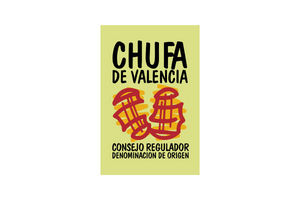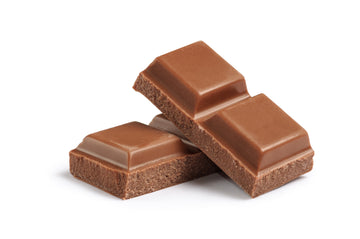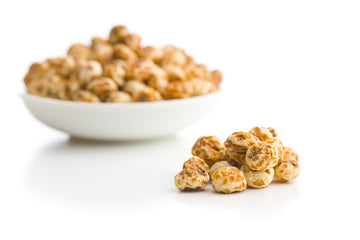Flavour development at the heart of the crumb process
Jun 05, 2025
I. Introduction: The Enduring Appeal of Milk Chocolate
Milk chocolate commands a significant share of the global confectionery market, celebrated for its smooth texture and its distinctive sweet, creamy flavor. This widespread appeal is often a direct result of specific processing methodologies that profoundly influence its sensory profile. This report undertakes a comprehensive analysis of why milk chocolate produced using "milk chocolate crumb" (also known as milk crumb or chocolate crumb) is frequently perceived as superior in taste compared to varieties made with milk powder. A central theme of this investigation is the pivotal role of Maillard reactions in generating this flavor differentiation.
Beyond traditional dairy chocolate, there is a rapidly expanding market for high-quality vegan milk chocolate alternatives. This report will further explore the opportunities for adapting the established "crumb process" to plant-based milks, aiming to enhance their flavor profiles and bridge the sensory gap with conventional products. The analysis will identify pioneering companies and research initiatives actively engaged in this innovative sector, detailing their approaches, the sensory outcomes achieved, and the persistent challenges in attaining true parity with traditional dairy milk chocolate.
II. The Distinctive Flavor of Milk Chocolate Crumb
A. The Crumb Process: A Culinary Alchemy
The "crumb process" represents a specialized manufacturing technique that imparts a unique character to certain milk chocolates, notably those originating from the United Kingdom. This method traces its origins to Daniel Peter's innovations in the 1870s, leveraging Henri Nestlé's condensed milk to overcome the challenge of incorporating liquid milk into chocolate.
The meticulous steps involved in the crumb manufacturing process are as follows:
-
Initial Mixture Preparation: The process commences with the blending of milk (which can be liquid, concentrated, or reconstituted from powdered milk) and sugar to form a homogeneous mixture.
-
Evaporation to Sweetened Condensed Milk: This mixture then undergoes an evaporation stage to produce sweetened condensed milk, a critical step that substantially reduces its water content. Fresh milk, containing approximately 87% water, is impractical for direct use in chocolate production due to its tendency to cause "seizing" (a rapid thickening or clumping of the chocolate mass). The crumb process effectively mitigates this issue by reducing the moisture content to a low range of 1-3%.
-
Cocoa Mass Integration: Following condensation, cocoa mass or liquor is incorporated into the sweetened condensed milk.
-
Vacuum Cooking and Maillard Initiation: The combined mixture is then subjected to vacuum cooking. This stage typically occurs under controlled temperatures, usually between 80°C and 95°C, and reduced pressure (5 to 20 mm Hg). The vacuum cooking not only facilitates efficient moisture evaporation but, more importantly, critically initiates the Maillard reaction, which is fundamental to the development of the crumb's distinctive flavor.
-
Drying and Milling: The resulting mass is subsequently dried and milled into a powdered crumb product.
-
Sugar Crystallization and Seeding: Modern advancements in this process may include "seeding" the mixture with crystalline sugar. This technique promotes and controls sugar crystallization, which in turn improves the crumb's handling properties, reduces overall processing time, and aids in more efficient drying.
The strategic importance of the crumb process extends beyond its flavor contribution. The inherent low water content of the crumb is paramount for its stability, significantly extending its shelf life compared to raw milk. Furthermore, the cocoa present in the crumb contains antioxidants, which further bolster its shelf stability. This dual benefit of superior flavor development and enhanced product stability/processability makes the crumb process a highly valuable, albeit more complex, manufacturing method. Its historical development as a robust solution to logistical and preservation challenges in chocolate production, particularly before the widespread availability of modern milk powder technologies, explains its continued use in "legacy situations" and its strong association with specific regional chocolate preferences. The crumb process thus represents a testament to early food engineering, solving complex challenges of ingredient compatibility and preservation while simultaneously creating a desirable sensory profile.
B. Maillard Reactions: The Heart of Crumb Flavor
The distinctive flavor profile of milk chocolate made with crumb is predominantly attributed to the Maillard reaction. This complex series of non-enzymatic browning reactions occurs when amino acids (the foundational building blocks of proteins) interact with reducing sugars (carbohydrates) under the influence of heat.
In the context of chocolate crumb production, the principal reactants include proteins derived from milk and cocoa, alongside reducing sugars such as lactose (naturally present in milk) and sucrose (added sugar, which can hydrolyze into reducing sugars during processing). It is important to differentiate the Maillard reaction from caramelization, which is a distinct chemical process involving only sugars. The Maillard reaction initiates with the condensation of a sugar and an amino acid, leading to a cascade of subsequent reactions including Amadori rearrangement, dehydration, fragmentation, and Strecker degradation. This intricate sequence ultimately culminates in the formation of hundreds of diverse flavor compounds and brown pigments known as melanoidins.
The Maillard reaction is responsible for generating a wide array of desirable flavor compounds that contribute to the "caramel," "cooked," "nutty," and "roasted" notes characteristic of crumb-based chocolate.3 Specific compounds identified include alkylpyrazines, which contribute to roasted and nutty aromas. Aldehydes such as 2-methylpropanal and 2-methylbutanal are also formed. Furthermore, compounds like 5-Methyl-2-phenyl-2-hexenal and 4-methyl-2-phenyl-2-pentenal are known to impart penetrating chocolate-like notes. The caramelization of lactose, a reducing sugar in milk, is a particularly prominent reaction that yields malty and intensely caramel notes.
The controlled heating, precise moisture content, and specific processing parameters employed during crumb manufacture are paramount for manipulating the flavor profile with precision and preventing the formation of undesirable off-flavors that can result from overexposure to Maillard conditions. Chocolate manufacturers are not merely allowing Maillard reactions to occur; they are actively engineering the flavor profile by meticulously adjusting temperature, time, pressure, and ingredient ratios. This high degree of control enables the creation of a wide spectrum of flavor profiles and crumb characteristics. The success of milk chocolate crumb therefore lies in the intentional manipulation of Maillard kinetics to produce specific, desirable flavor compounds, positioning it as a sophisticated flavor engineering technique rather than a simple ingredient addition. This understanding is crucial when considering its potential application to plant-based systems.
C. Sensory Profile Comparison: Crumb vs. Milk Powder
The choice between milk chocolate crumb and milk powder as a dairy component results in distinctly different sensory profiles in the final product.
Flavor Differences:
-
Crumb-based Chocolate: This type of chocolate is frequently described as possessing a richer, more complex flavor profile, characterized by cooked, caramelised, and sometimes toffee-like notes. This complexity is a direct consequence of the Maillard reaction occurring during the crumb manufacturing process. Specific milk treatments during the crumb process can also contribute to distinct "cowy" or milky flavors. This flavor signature is commonly associated with milk chocolate produced in the United Kingdom, the United States, and South Africa.
-
Milk Powder-based Chocolate: In contrast, milk chocolate made with milk powder typically presents a flavor that is perceived as fresher, cleaner, and more purely milky. In these chocolates, the milk flavor is more directly attributable to the inherent taste of the dairy itself, without the added cooked or caramelized nuances derived from Maillard reactions. This method of production is more prevalent in Continental Europe.
Texture and Mouthfeel:
While flavor differentiation is significantly driven by Maillard reactions, texture and mouthfeel are equally critical determinants of consumer appeal. Crumb-based chocolate is often perceived as having a superior texture. A smooth texture is highly preferred by consumers, who tend to associate it with a more luxurious product. Particle size plays a critical role in this perception, with smaller particles generally leading to a smoother, more mouthcoating chocolate.
Refining and Conching, a dual process involving prolonged mixing and grinding of chocolate ingredients, significantly influences texture by reducing particle size and ensuring that solid particles are thoroughly coated with the fat phase. This contributes to the chocolate's smoothness and desirable flow properties. Although conching can influence overall flavor and aroma, some studies suggest that conching time alone may not alter flavor directly. The ideal melt temperature of chocolate, typically around 37°C, is also crucial for a pleasant mouthfeel as it allows the chocolate to slowly melt in the mouth. Conversely, excessive incorporation of milk powder can negatively impact flavor, potentially leading to a "wax taste," and can cause "texture blooming," where milk powder particles become visually apparent on the chocolate surface.
The perceived superiority of crumb-based chocolate arises from a holistic sensory experience, combining complex Maillard-derived flavors with potentially better textural attributes. These attributes are less prone to issues like grittiness or blooming compared to direct milk powder incorporation. This reinforces the understanding that the crumb process is a sophisticated solution for achieving a desired sensory signature, intricately linking chemical transformations with consumer preference and regional production traditions.
Table 2: Sensory Profile Comparison: Milk Chocolate Crumb vs. Milk Powder
|
Feature |
Milk Chocolate (Crumb) |
Milk Chocolate (Milk Powder) |
|
Dominant Flavor |
Cooked, Caramelised, Toffee, Milky Sweetness |
Fresh Milk, Clean, Pure Milk Flavor |
|
Flavor Complexity |
Often More Complex Due to Maillard Reaction |
Potentially Simpler, Direct Milk Flavor |
|
Texture |
Often Perceived as Better |
Can Vary |
|
Association |
Linked to British, American, and South African Milk Chocolate |
Common in Continental Europe |
D. Beyond Flavor: Shelf Life and Processing Advantages of Crumb
Beyond its significant contribution to flavor, chocolate crumb offers substantial practical advantages in the industrial manufacturing of chocolate.
Extended Shelf Life: A primary benefit of chocolate crumb is its remarkably low water content, typically ranging from 1-3%. This low moisture level is critical for its stability, enabling a significantly extended shelf life compared to the highly perishable fresh milk from which it is derived. Furthermore, the inherent presence of cocoa in the crumb, which is rich in antioxidant chemicals, provides additional protection against spoilage, further contributing to its superior shelf stability.
Processing Efficiency: Chocolate crumb is a dry, powdered intermediate product that can be quickly and economically incorporated into the subsequent stages of chocolate manufacturing. Its dry nature is crucial because it prevents the "seizing" phenomenon—a rapid thickening or clumping—that occurs when water-rich ingredients, such as fresh milk, are directly mixed with chocolate mass. The crumb process inherently addresses this critical processing hurdle, making manufacturing more reliable and efficient. Innovations within the crumb process, such as the use of single reaction vessels for evaporation and processing, and the strategic "seeding" with sugar to promote crystallization, further enhance efficiency by reducing overall process time and improving handling properties.
The historical importance of the crumb process in enabling the industrial-scale production and distribution of milk chocolate cannot be overstated. It represents a foundational food engineering solution that addressed complex challenges of ingredient compatibility and preservation, all while simultaneously creating a highly desirable flavor profile. Its enduring relevance, particularly in "legacy situations" where specific flavor profiles and production lines have been established, underscores the difficulty of simply replacing it with milk powder without incurring sensory or processing trade-offs.
III. Opportunities for Vegan Milk Chocolate through Crumb Technology
A. Challenges in Vegan Milk Chocolate Development
Creating high-quality vegan milk chocolate that authentically replicates the full sensory experience of its dairy counterpart presents a formidable challenge for food scientists and manufacturers.
Replicating Creaminess and Melt: A significant hurdle lies in achieving the characteristic creamy, smooth texture and the melt-in-the-mouth feel that defines traditional milk chocolate. This difficulty stems from the fundamental differences in fat content and protein structures between plant-based ingredients and dairy components. Plant-based fats and oils, for instance, may necessitate different processing temperatures to prevent issues such as separation or undesirable texture development.
Addressing Off-Flavors: Many plant-based proteins, derived from sources such as soy, pea, almond, oat, and rice, can introduce inherent "beany," "grassy," or "earthy" undertones. These undesirable notes can unfortunately overpower the intended chocolate flavor. Specific examples highlight these issues: rice milk, while often more economical, frequently lacks sufficient creaminess and can impart an overly sweet taste without the nuanced complexity desired in chocolate. Similarly, oat milk, if not carefully managed in its concentration, can lead to a grainy texture in the final product.
Cost and Shelf-Life Optimization: The sourcing of suitable plant-based milk powders can be more challenging and often more expensive than obtaining their conventional dairy equivalents. Furthermore, maintaining a low water activity in vegan chocolate formulations is crucial for ensuring adequate shelf life, similar to dairy chocolate, to prevent microbiological spoilage and the undesirable phenomenon of fat bloom.
The multifaceted role of dairy in traditional chocolate extends far beyond merely providing a "milk flavor". Dairy contributes proteins vital for creaminess and mouthfeel , fats essential for desirable texture, and lactose, a reducing sugar, which is a key reactant in Maillard reactions. Vegan alternatives often struggle across all these dimensions—texture (manifesting as graininess or insufficient creaminess), flavor (due to off-notes or a lack of distinct dairy-like characteristics), and functional properties (including shelf life and processing compatibility). This indicates that a simple, one-to-one substitution of milk powder with a plant-based powder is generally insufficient. Instead, a holistic approach is required to mimic dairy's complex contributions. The challenge in vegan milk chocolate development is not simply about finding a "milk substitute," but rather about engineering a "dairy functionality substitute" that simultaneously addresses flavor, texture, and processing characteristics. This complex requirement elevates the potential value of a "vegan crumb process" that can integrate multiple functionalities into a single ingredient.
B. Leveraging Maillard Reactions for Plant-Based Flavor Enhancement
The Maillard reaction presents a significant and promising opportunity for substantially improving the flavor profile of vegan milk chocolate. By harnessing this reaction, desirable savory, umami, caramel, and roasted notes can be generated, which are often lacking in current plant-based formulations.
Theoretical Basis: Fundamentally, the Maillard reaction can occur between amino acids derived from various plant-based proteins (such as soy, pea, chickpea, oat, and tigernut) and reducing sugars, mirroring the chemical principles observed in dairy chocolate. This controlled chemical process has the capacity to generate a wide array of complex flavor compounds.
Masking Off-Notes and Building Complexity: A crucial application of Maillard reactions in vegan chocolate is their ability to help mask or balance the inherent "beany," "grassy," or "earthy" undertones that can often be present in plant-based proteins. This leads to a cleaner and more enjoyable flavor profile for the consumer. Existing "cocoa enhancers," which frequently incorporate Maillard reaction-type flavors, are already utilized in the food industry to boost chocolate flavor and to mask unwanted tastes, including those in plant-based beverages. By carefully controlling the parameters of the Maillard reaction—including temperature, time, water activity, pH, and the specific types of amino acids and reducing sugars present —manufacturers can strategically develop specific caramelization, toffee, and roasted notes. This adds a crucial layer of depth and richness that is often conspicuously absent in simpler vegan formulations.
The core problem in vegan milk chocolate often lies in its perceived "blandness" or the presence of undesirable "off-flavors" when compared to dairy-based products. Given that the Maillard reaction is known to produce "complex flavors and aromas" , its application to plant-based proteins offers a powerful tool. This process is not merely about adding flavor; it is about fundamentally transforming the raw material's inherent characteristics. By enabling plant proteins to participate in Maillard reactions, this chemical process becomes a potent mechanism to build the missing flavor complexity and effectively mask undesirable notes. The "crumb process," with its inherent focus on controlled Maillard reactions, therefore offers a highly promising pathway for vegan milk chocolate. It shifts the paradigm from simply finding a dairy alternative to applying a proven flavor-development methodology to plant-based ingredients, thereby achieving a more sophisticated and palatable sensory profile that can potentially bridge the flavor gap with traditional milk chocolate.
IV. Pioneering Innovations in Plant-Based Crumb Processes
The adaptation of the "crumb process" for plant-based milks and the production of dairy-free chocolate is a dynamic and active area of research and development. Several companies are at the forefront of this innovation, seeking to replicate the desirable sensory attributes of traditional milk chocolate using non-dairy ingredients.
A. A New Approach
The landscape of innovation in plant-based chocolate is characterized by a diverse range of approaches and ingredients, reflecting a competitive drive to overcome the inherent challenges of dairy-free formulations. The significant patenting activity in this area underscores the substantial research and development investment and the strategic imperative to protect novel processes and formulations. The strategic application of Maillard reactions within a crumb-like process can effectively address flavor complexity and depth, and it is Tiger & Bean that is explicitly dedicated to developing a new generation of "dairy-free crumb". We hold patented processes and ingredient formulations specifically for plant-based chocolate crumb, including versions that are dairy-free and allergen-free. Our pioneering work involves the use of tigernut, sunflower seed, and cashew nut in our dairy-free crumb formulations.
Tigernut, a tuber rather than a nut, is particularly highlighted for its "superior flavour," contributing a "subtle sweetness and a naturally creamy, almost nutty nuance" that is often absent in alternatives like rice flour. Our process adaptation involves liquefaction and/or saccharification of the plant-based milk, followed by heating and drying to form the crumb. Unlike rapid drying methods like spray drying, which intentionally minimize flavor changes, our "crumb process" is designed to enhance the development of complex flavors through controlled Maillard reactions.
V. Conclusion and Future Outlook
The superior flavor profile often associated with milk chocolate made with "milk chocolate crumb" is primarily attributable to the controlled Maillard reactions that occur during its distinctive manufacturing process. This sophisticated culinary technique generates a complex array of caramel, cooked, nutty, and roasted notes, imparting a depth and richness that clearly distinguishes it from the simpler, fresher taste of milk chocolate produced using milk powder. Beyond its flavor contributions, the crumb process also offers significant practical advantages in terms of extended shelf life and enhanced processing efficiency.
The fundamental principles of the crumb process, particularly the strategic application of Maillard reactions, present a compelling and promising pathway for significantly enhancing the flavor of vegan milk chocolate. This approach holds the potential to overcome many common challenges encountered in plant-based alternatives, such as replicating the characteristic creaminess and effectively masking the inherent off-flavors often found in various plant proteins.
Tiger & Bean is actively engaged in pioneering innovations within this space. Our efforts encompass the exploration of diverse plant-based ingredients, such as tigernut, cashew and sunflower seed protein and the adaptation of processing techniques to create dairy-free crumb and chocolate formulations that effectively leverage Maillard-derived flavors.
As global consumer demand for ethical, sustainable, and high-quality plant-based options continues to grow, the "crumb process" and its underlying flavor chemistry will undoubtedly play a pivotal role in shaping the next generation of truly indulgent and satisfying vegan milk chocolate.
Works cited
-
What is Milk Chocolate: History, Facts & Nutrition - Kron Chocolatier, accessed June 5, 2025, https://www.kronchocolatier.com/blogs/news/what-is-milk-chocolate
-
Chocolate crumb, the secret ingredient you have never heard of. - Tiger & Bean, accessed June 5, 2025, https://www.tigerandbean.com/pages/chocolate-crumb-the-secret-ingredient-you-have-never-heard-of
-
OUR PROCESS FOR MAKING TRUE MILK CHOCOLATE IS REMARKABLY COMPLEX. NO WONDER IT TASTES THAT WAY. - Cargill, accessed June 5, 2025, https://www.cargill.com/doc/1432220495678/milk-chocolate-crumb-product-line.pdf
-
EP2393379A1 - Process for preparing chocolate crumb - Google Patents, accessed June 5, 2025, https://patents.google.com/patent/EP2393379A1/en
-
US20110300286A1 - Process for preparing chocolate crumb - Google Patents, accessed June 5, 2025, https://patents.google.com/patent/US20110300286A1/en
-
Milk chocolate - Wikipedia, accessed June 5, 2025, https://en.wikipedia.org/wiki/Milk_chocolate
-
US20240090526A1 - Process for the production of plant-based crumb - Google Patents, accessed June 5, 2025, https://patents.google.com/patent/US20240090526A1/en
-
Easter Ingredient Essentials: Chocolate Crumb and Fresh Milk - Meadow Foods, accessed June 5, 2025, https://meadowfoods.co.uk/easter-ingredient-essentials-chocolate-crumb-and-fresh-milk/
-
Different types of chocolate: explained, accessed June 5, 2025, https://spinnakerchocolate.com/blogs/blog/different-types-of-chocolate-explained
-
The Science, History and Future of Milk Chocolate Crumb - Tiger & Bean, accessed June 5, 2025, https://www.tigerandbean.com/blogs/news/the-secret-ingredient-unveiling-the-science-and-future-of-milk-chocolate-crumb
-
A little out of place, but does anyone know what crumb is in chocolate making? - Reddit, accessed June 5, 2025, https://www.reddit.com/r/chocolate/comments/114a5as/a_little_out_of_place_but_does_anyone_know_what/
-
2000 The Flavor of Milk Chocolate Changes Caused by Processing, accessed June 5, 2025, https://www.blommer.com/_documents/flavor-changes-caused-by-processing-article.pdf
-
chemistry-of-good-chocolate.pdf, accessed June 5, 2025, https://www.rsc.org/globalassets/03-membership-community/connect-with-others/through-interests/interest-groups/food/awards/chemistry-of-good-chocolate.pdf
-
The Chemistry Behind Chocolate Production: Unveiling Sweet Science Secrets, accessed June 5, 2025, https://advancedchemtech.com/chemistry-chocolate/
-
Maillard Reaction | Custom Flavors - T. Hasegawa U.S.A., accessed June 5, 2025, https://www.thasegawa.com/flavors/maillard-reaction/
-
Food Processing and Maillard Reaction Products: Effect on Human Health and Nutrition, accessed June 5, 2025, https://pmc.ncbi.nlm.nih.gov/articles/PMC4745522/
-
Maillard Reaction: Mechanism, Influencing Parameters, Advantages, Disadvantages, and Food Industrial Applications: A Review - MDPI, accessed June 5, 2025, https://www.mdpi.com/2304-8158/14/11/1881
-
The Maillard Reaction - Modernist Cuisine, accessed June 5, 2025, https://modernistcuisine.com/mc/the-maillard-reaction/
-
Maillard reaction in food technologies, accessed June 5, 2025, https://nuft.edu.ua/doi/doc/ujfs/2023/2/4.pdf
-
Melanoidins Formed by Maillard Reaction in Food and Their Biological Activity, accessed June 5, 2025, https://www.researchgate.net/publication/257644708_Melanoidins_Formed_by_Maillard_Reaction_in_Food_and_Their_Biological_Activity
-
Chocolate Flavor via the Maillard Reaction - ResearchGate, accessed June 5, 2025, https://www.researchgate.net/publication/286014704_Chocolate_Flavor_via_the_Maillard_Reaction
-
Effects of conching time and ingredients on preference of milk chocolate - ResearchGate, accessed June 5, 2025, https://www.researchgate.net/publication/227677461_Effects_of_conching_time_and_ingredients_on_preference_of_milk_chocolate
-
The Chemistry behind Chocolate Production - PMC - PubMed Central, accessed June 5, 2025, https://pmc.ncbi.nlm.nih.gov/articles/PMC6749277/
-
www.researchgate.net, accessed June 5, 2025, https://www.researchgate.net/publication/286014704_Chocolate_Flavor_via_the_Maillard_Reaction#:~:text=5%2DMethyl%2D2%2Dphenyl,found%20in%20the%20reaction%20product.
-
British vs American Chocolate: Key Differences Explained - Sugar Rush Emporium, accessed June 5, 2025, https://sugarrushemporium.co.uk/british-vs-american-chocolate-key-differences-explained/
-
Analytical Characterization of Mouthfeel in Chocolate - NETZSCH Analyzing & Testing, accessed June 5, 2025, https://analyzing-testing.netzsch.com/_Resources/Persistent/f/9/8/c/f98c4cadfec4f8c457b27123e2ec03097aa6d0c4/WP_Analytical%20Characterization%20of%20Mouthfeel%20in%20Chocolate.pdf
-
The Quality of Milk Chocolate Bars by Substitution of Cocoa Butter, Milk Powder and Lecithin Soya – A Preliminary Study, accessed June 5, 2025, https://ijaseit.insightsociety.org/index.php/ijaseit/article/download/544/pdf_36/683
-
The Vegan Chocolate Market: Tapping Into the Vegan Dessert Market - OV Group, accessed June 5, 2025, https://ovgrp.com/vegan-chocolate-market/
-
Making a better vegan milk chocolate - The Vegan Review, accessed June 5, 2025, https://www.theveganreview.com/making-a-better-vegan-milk-chocolate/
-
Vegan Milk Chocolate Vs. Dairy Milk Chocolate - LOVO Chocolate, accessed June 5, 2025, https://lovochocolate.com/blogs/whats-new/vegan-milk-chocolate-vs-dairy-milk-chocolate
-
Vegan Chocolate vs. Regular Chocolate: What's the Difference? - PlantX, accessed June 5, 2025, https://plantx.com/blogs/vegan-blogs/vegan-chocolate-vs-regular-chocolate
-
How the Plant-Based Revolution is Shaping Flavor Development, accessed June 5, 2025, https://trilogyflavors.com/how-the-plant-based-revolution-is-shaping-flavor-development/
-
Cocoa Enhancers: Maximizing Chocolate Flavor While Reducing Cocoa Usage, accessed June 5, 2025, https://www.mosaicflavors.com/news/cocoa-enhancers-maximizing-chocolate-flavor-while-reducing-cocoa-usage
-
Developing alternative chocolate with a traditional taste | AltaBioscience, accessed June 5, 2025, https://altabioscience.com/articles/developing-alternative-chocolate-with-a-traditional-taste-altabioscience/
-
Ingredients in focus: Why Tiger Nut Makes Our Dairy-Free Chocolate Crumb Sing!, accessed June 5, 2025, https://www.tigerandbean.com/blogs/news/the-secrets-out-why-tiger-nut-makes-our-dairy-free-crumb-sing
-
WO2023285643A1 - Chocolate free from dairy components - Google Patents, accessed June 5, 2025, https://patents.google.com/patent/WO2023285643A1/en
-
Vegan Chocolate for Plant-Based Confections - Xray, accessed June 5, 2025, https://xray.greyb.com/chocolate/vegan-ingredients
-
Plant-Based Fats in Chocolate Manufacturing - Xray - GreyB, accessed June 5, 2025, https://xray.greyb.com/chocolate/plant-based-fats
-
AU2017385959A1 - Chickpea protein products and methods of making thereof - Google Patents, accessed June 5, 2025, https://patents.google.com/patent/AU2017385959A1/en
-
Fuji Oil Company, Limited - IPqwery, accessed June 5, 2025, https://www.ipqwery.com/ipowner/en/owner/ip/493155-fuji-oil-co-ltd.html
-
Adapting to the Cocoa Price Surge: Vegan Milk Chocolate for Independen - Tiger & Bean, accessed June 5, 2025, https://www.tigerandbean.com/blogs/news/adapting-to-the-cocoa-price-surge-the-strategic-imperative-of-vegan-milk-chocolate-for-independent-bean-to-bar-makers
-
Tiger nut (Cyperus esculentus) starch: extraction, composition, structure, properties, modification and uses - RSC Publishing, accessed June 5, 2025, https://pubs.rsc.org/en/content/articlehtml/2024/fb/d3fb00246b
-
Most desirable substrate for maillard reaction peptides prepared from chickpea protein hydrolysates based on PLSR | Request PDF - ResearchGate, accessed June 5, 2025, https://www.researchgate.net/publication/320695421_Most_desirable_substrate_for_maillard_reaction_peptides_prepared_from_chickpea_protein_hydrolysates_based_on_PLSR
-
Effects of Chickpea Protein on Carbohydrate Reactivity in Acrylamide Formation in Low Humidity Model Systems - MDPI, accessed June 5, 2025, https://www.mdpi.com/2304-8158/9/2/167
-
HERSHEY'S Plant Based Extra Creamy with Almond and Sea Salt Candy Bar, 1.55 oz (12 Count) - Amazon.com, accessed June 5, 2025, https://www.amazon.com/HERSHEYS-Oat-Made-Almond-Chocolate-Confection/dp/B0B7FK8H2G
-
Plant-Based Hershey Bars Review (Taste Test) - Make It Dairy Free, accessed June 5, 2025, https://makeitdairyfree.com/plant-based-hershey-bars-review-taste-test/
-
Flourless Black Bean Chocolate Cake (gluten-free!) - The Pancake Princess, accessed June 5, 2025, https://www.thepancakeprincess.com/flourless-black-bean-chocolate-cake-gluten-free/
-
Physico-chemical and sensory properties of cereal/legume-substituted cocoa-based beverage | Request PDF - ResearchGate, accessed June 5, 2025, https://www.researchgate.net/publication/280184856_Physico-chemical_and_sensory_properties_of_cereallegume-substituted_cocoa-based_beverage
-
Chocolate Trends 2025: A Shift to Soy And Grape Seed - GreyB, accessed June 5, 2025, https://www.greyb.com/blog/chocolate-trends/












